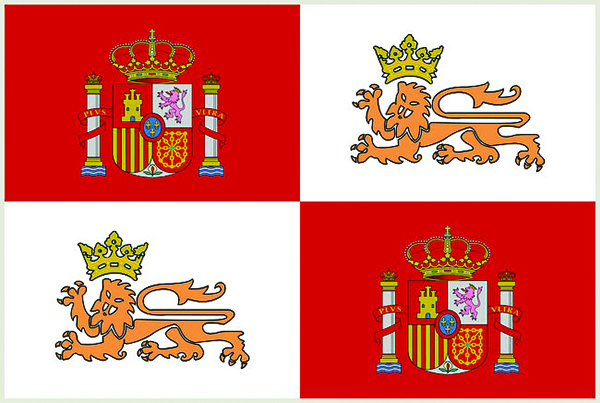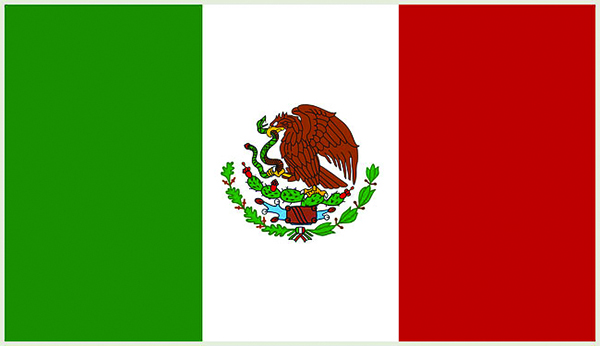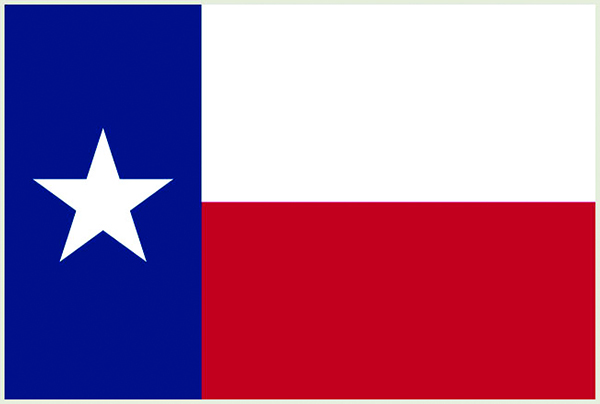Today, the nation and the world recognize Texas’ Lone Star State flag but most Texans know there is much more to Texas vexillology. Our modern history began back in the 16th century, is entwined with that of five nations, and includes a period of sovereignty during which Texas governed itself.

1 • Kingdom of Spain
In the early 1500s, Spanish Conquistadors began exploring this lush region as they moved northward from their South American colonies. At the time, Spain was a collection of kingdoms rather than a country, and Texas was ruled by the Crown of Castile for more than 150 years.
2 • Kingdom of France

In the 1680s, after claiming Louisiana, French explorers continued moving west from the Mississippi River and set about settling this large and strategic land mass for France. Recognizing its commercial potential, Robert de La Salle founded Fort St. Louis, a French colony along the Gulf coast, and hoped to profit from food crops and cotton. Unfortunately for France, Native Americans defended their own rights to be there and killed the French colonists. After the failure of Fort St. Louis and due to continued pressure from Spaniards to keep Texas for themselves, the French colony was abandoned in 1690.
Spain (again)
The Spanish never actually left and between 1690 and 1821, Spain built many settlements and forts across the southwest territories to accommodate Spanish settlers, missionaries, and soldiers. Spanish influence remains today in much of the culture and city names across Texas, most notably, San Antonio.
3 • Republic of Mexico

Like America against Mother England, Mexico won its own war of independence with Spain in 1821 and made Texas part of its new nation. Mexico’s leaders quickly began encouraging settlers from the United States to immigrate and by 1834, Anglo settlers outnumbered Mexicans by nearly 5 to 1. However, the Texians were never happy with the dictatorship of President Santa Anna and they banded together to fight their own revolution in 1836.
4 • Republic of Texas

Motivated by losses at the Alamo and Goliad, Texas won its independence in 1836. Mexico refused to accept it but the Republic of Texas nonetheless convened its first Congress in 1836 under self-rule. Having endured nearly a decade of political turmoil, continuing conflict with Mexico and First Nations, a failing economy, and government debt, Texas began discussions with the United States to be admitted into the Union. While it existed—1836 to 1845—the Republic had two national flags. The second was the Lone Star flag, first flown December 29, 1845, when Texas joined the United States. The Lone Star flag is still recognized today as the state flag of Texas.
5 • United States of America
Texas was admitted to the Union and became the 28th state in 1845. The federal government assumed the Republic’s debt and in return, Texas lands were annexed as were other territories and claims in Colorado, Kansas, Oklahoma, New Mexico, and Wyoming.
6 • Confederate States of America
After 16 years in the Union, Texas seceded with other slave holding states and more than 70,000 Texans served in the Confederate army. Texans are known to have fought in every theater and almost every battle of the war. Texas surrendered June 2, 1865—following General Lee’s surrender in Virginia—and on June 19 (Juneteenth), federal forces arrived in Galveston to enforce United States law and begin the process of readmitting Texas into the Union.
It is actually a myth (sorry!) that Texas is the only state allowed to fly its flag at the same height as the U.S. flag. “All state flags can be flown at the same height as the US flag, and are routinely flown that way. “
~ Peter Ansoff, president, North American Vexillological Association
U.S. Flag Code states: No … flag or pennant may be placed above the flag of the United States or to the United States flag’s right. Texas code also indicates that if the state and U.S. flag are displayed on the same flagpole, “the United States flag should be above the state Flag.”
And then there were parks…
Six Flags was the brainchild of Texas oil man Angus Wynne, Jr. He opened his premier park in 1961 and imagined a franchise that would be bigger than Disney World. He achieved his goal by building parks close to where people lived to make it easier and more affordable for families to enjoy them. His Texas park was named for the flag display and his namesake vision has grown to 27 parks in three countries.
